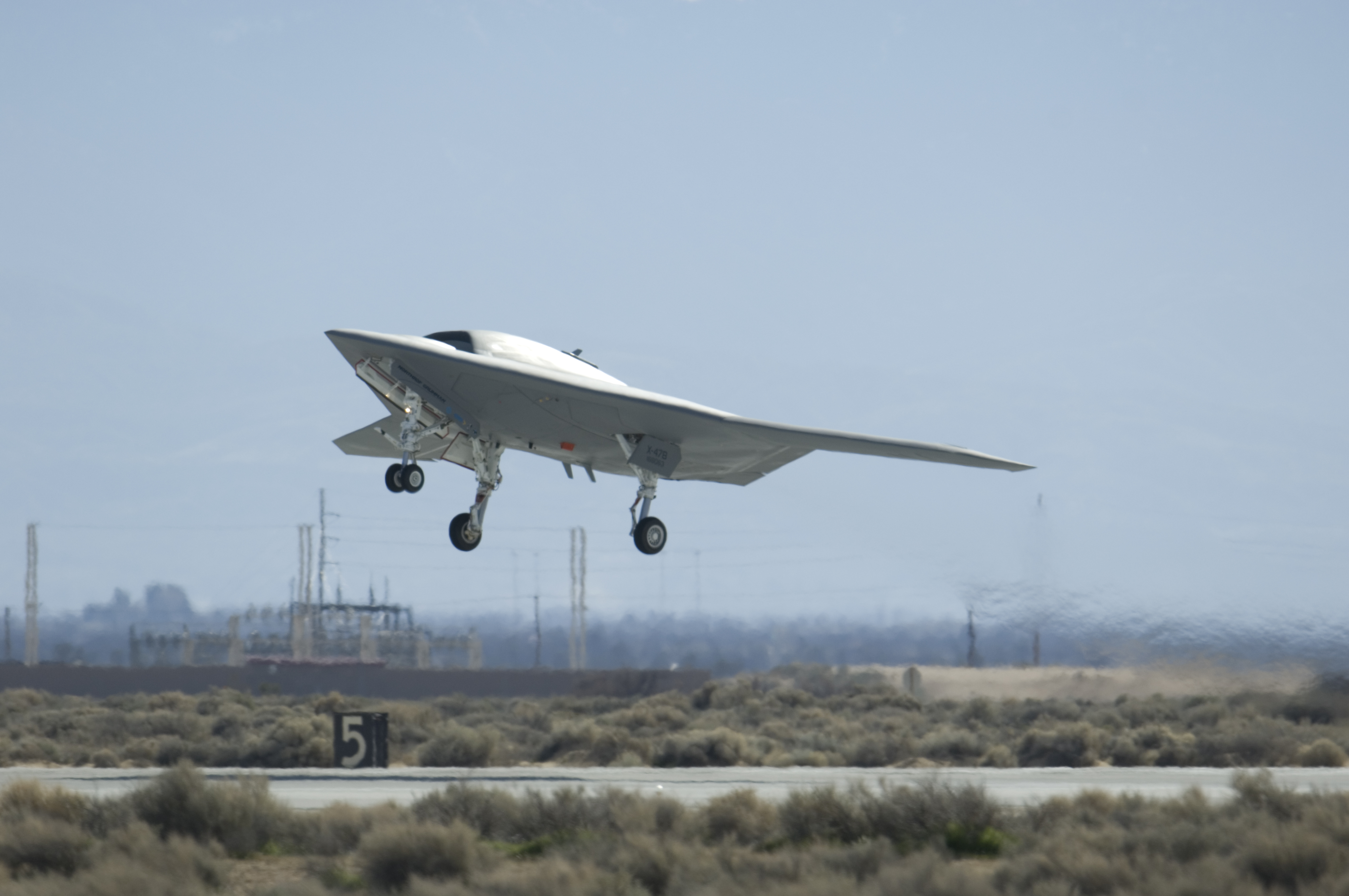|
Unmanned Combat Air System Demonstrator Program
The United States Navy Unmanned Combat Air System Demonstrator (UCAS-D) program consists of * Northrop Grumman X-47A Pegasus * Northrop Grumman X-47B The UCAS-D program is to demonstrate the feasibility of operating an unmanned vehicle on an aircraft carrier. Technology and operational procedures gained from the program and X-47B demonstrator will be used to develop an operational unmanned carrier aircraft through the Unmanned Carrier-Launched Surveillance and Strike (UCLASS) program. - Flightglobal.com, 10 July 2013 References See also *UCLASS
[...More Info...] [...Related Items...] OR: [Wikipedia] [Google] [Baidu] |
United States Navy
The United States Navy (USN) is the maritime service branch of the United States Armed Forces and one of the eight uniformed services of the United States. It is the largest and most powerful navy in the world, with the estimated tonnage of its active battle fleet alone exceeding the next 13 navies combined, including 11 allies or partner nations of the United States as of 2015. It has the highest combined battle fleet tonnage (4,635,628 tonnes as of 2019) and the world's largest aircraft carrier fleet, with eleven in service, two new carriers under construction, and five other carriers planned. With 336,978 personnel on active duty and 101,583 in the Ready Reserve, the United States Navy is the third largest of the United States military service branches in terms of personnel. It has 290 deployable combat vessels and more than 2,623 operational aircraft . The United States Navy traces its origins to the Continental Navy, which was established during the American Revo ... [...More Info...] [...Related Items...] OR: [Wikipedia] [Google] [Baidu] |
Northrop Grumman X-47A Pegasus
The Northrop Grumman X-47 is a demonstration unmanned combat aerial vehicle. The X-47 began as part of DARPA's J-UCAS program, and is now part of the United States Navy's UCAS-D program to create a carrier-based unmanned aircraft. Unlike the Boeing X-45, initial Pegasus development was company-funded. The original vehicle carries the designation X-47A Pegasus, while the follow-on naval version is designated X-47B. Design and development The US Navy did not commit to practical UCAV efforts until mid-2000, when the service awarded contracts of US$2 million each to Boeing and Northrop Grumman for a 15-month concept-exploration program. Design considerations for a naval UCAV included dealing with the corrosive salt-water environment, deck handling for launch and recovery, integration with command and control systems, and operation in a carrier's high electromagnetic interference environment. The Navy was also interested in using their UCAVs for reconnaissance missions, penetratin ... [...More Info...] [...Related Items...] OR: [Wikipedia] [Google] [Baidu] |
Northrop Grumman X-47B
The Northrop Grumman X-47B is a demonstration unmanned combat aerial vehicle (UCAV) designed for aircraft carrier-based operations. Developed by the American defense technology company Northrop Grumman, the X-47 project began as part of DARPA's J-UCAS program, and subsequently became part of the United States Navy's Unmanned Combat Air System Demonstration (UCAS-D) program. The X-47B is a tailless jet-powered blended-wing-body aircraft capable of semi-autonomous operation and aerial refueling. The X-47B first flew in 2011, and , its two active demonstrators have undergone extensive flight and operational integration testing, having successfully performed a series of land- and carrier-based demonstrations. In August 2014, the US Navy announced that it had integrated the X-47B into carrier operations alongside manned aircraft, and by May 2015 the primary test program was declared complete. The X-47B demonstrators themselves were intended to become museum exhibits after comple ... [...More Info...] [...Related Items...] OR: [Wikipedia] [Google] [Baidu] |
Unmanned Carrier-Launched Airborne Surveillance And Strike
The Unmanned Carrier-Launched Airborne Surveillance and Strike (UCLASS) was a United States Navy program to develop an autonomous carrier-based unmanned combat aerial vehicle providing an unmanned intelligence and strike asset to the fleet. After debate over whether the UCLASS should primarily focus on stealthy bombing or scouting, the Pentagon instead changed the program entirely into the Carrier-Based Aerial-Refueling System (CBARS) to create a UAV for aerial refueling duties to extend the range of manned fighters,Good-Bye, UCLASS; Hello, Unmanned Tanker, More F-35Cs In 2017 Budget - Breakingdefense.com, 1 February 2016 which lead to the |
UCLASS
The Unmanned Carrier-Launched Airborne Surveillance and Strike (UCLASS) was a United States Navy program to develop an autonomous carrier-based unmanned combat aerial vehicle providing an unmanned intelligence and strike asset to the fleet. After debate over whether the UCLASS should primarily focus on stealthy bombing or scouting, the Pentagon instead changed the program entirely into the Carrier-Based Aerial-Refueling System (CBARS) to create a UAV for aerial refueling duties to extend the range of manned fighters,Good-Bye, UCLASS; Hello, Unmanned Tanker, More F-35Cs In 2017 Budget - Breakingdefense.com, 1 February 2016 which lead to the |

